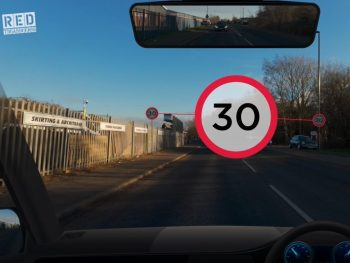Van driver speeding has reached epidemic proportions, creating a major safety and cost issue that the new government should address, Red Corporate Driver Training believes.

Recent Department for Transport (DfT) figures show van drivers are the most likely group of drivers to speed in built-up areas and on motorways. However, the DfT was unable to provide data on single carriageways roads due to the complex rules around speed limits for commercial vehicles – which Red says proves how little clarity there is around van speed limits.
DfT statistics showed that in free-flowing traffic in 30mph zones, 45% of vans drivers were speeding, with 5% reaching speeds over 40mph.
On motorways, 47% of vans drivers exceeded the 70mph limit with 10% breaking 80mph. With around 4.5 light million commercial vehicles on UK roads, it means approximately two million of them could have been speeding on densely populated roads and motorways.
“The instances of speeding in vans are remarkably, worryingly, consistent across all road types that were measured. Extrapolate that across the millions of vans drivers at work in the UK, and it illustrates that drivers at work in commercial vehicles are breaking the law far too often,” said Red Corporate Driver Training’s head of corporate, Greg Ford.
“Not only does this provide a safety risk, but costs more too because the faster a van goes, the more fuel it uses, while also carrying inherent reputational damage for the company as well.”
Ford also warned that the figures fail to reveal the elephant in the room: speeding commercial vehicles on national speed limit roads.
In its report, the DfT states: ‘The speed limit applicable to different types of van on this road type depends on the maximum laden weight and construction of the vehicle, which cannot be determined by our data source.’
Ford added: “In our work with fleets, this is one of the single biggest sources of confusion, and risk: the speed limits for different commercial vehicle types and weights. So often when drivers come to us, they don’t know whether their commercial vehicle should be 56, 60 or 70mph on a dual carriageway, or 50, 56 or 60mph on a single.”
Red has launched a series of interactive e-learner videos – including one that explains the rules around commercial vehicle speed limits.
Ford said it’s an area that fleets need to address.
“As these DfT figures show, there are a lot of van drivers out there breaking speed limits. But what these figures don’t show, and it’s something fleets need to think about, is how many of their drivers are breaking speed limits without realising, because they’re unaware of the limit on their specific vehicle? Then, when a speeding ticket comes in, they’re shocked they’ve done something wrong, when they thought they were driving considerately,” he added.
Red’s new SafetyFirst platform ensures that every driver is risk assessed and has their licence checked, but Ford believes that the new government could also step in and make the issue of speeding higher profile, and not only from a safety perspective, but an environmental one too.
“We need to make speeding a taboo activity, and to do that it comes from the top down. There are lots of penalties and activity to punish speeding, but we need to create a culture where it becomes self-policing, rather than a battle between the motorist versus the police and technology,” he said.
“But also, this new government has clearly stated aim to decarbonise our society, and reducing vehicle speeds will have a big impact on that. Slower, better driven vehicles use less fuel and produce fewer pollutants. We need to show drivers how this can benefit them, their employers and society at large.”
Solutions could include mandatory adoption in vans of Intelligent Speed Assistance (ISA), which uses GPS technology, cameras and various in-cab warnings to keep drivers below the legal limit. The EU now mandates that all new vehicles built within its borders are fitted with the technology, but this is not the case in the UK, meaning that the roll-out is patchy, and dependent on where the van was made.
Not only can this cause confusion about whether drivers should use it, but also makes it difficult for fleet to enact a policy. Ford would like to see the Government move into line with the EU.
“With this epidemic of speeding, we’d like to see all vans fitted with technology that helps drivers keep below the limit for their particular vehicle,” Greg Ford said.
“That way a fleet can put in place clear policies on speeding, and with more training and better culture around sticking to speed limits, we can bring these shocking numbers down.”

